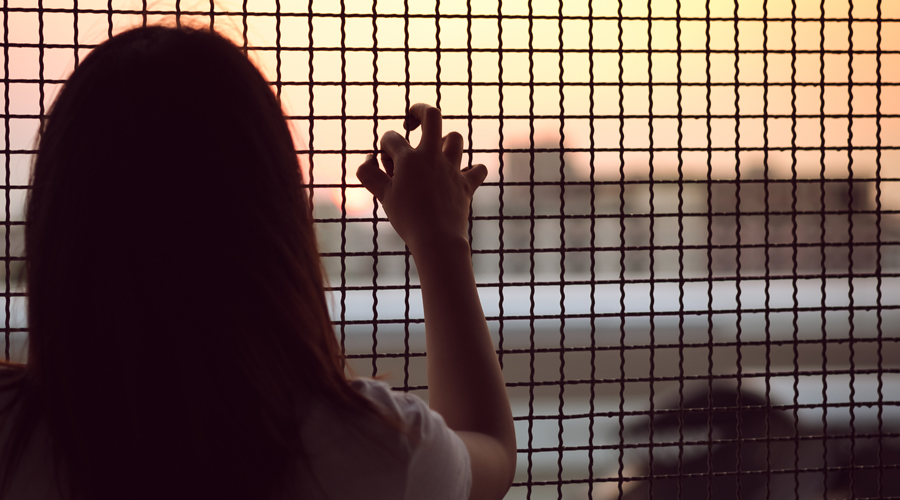In June this year, protests by Sikh groups rocked Jammu and Kashmir. They alleged that two women from their community had been ‘kidnapped, converted and married’ in Srinagar. One of the women was ‘rescued’ and married off outside Kashmir, while the other woman dismissed the allegation of forced conversion and said that she had married the man out of her own free will. The issue is complicated and a sectarian comprehension is unwarranted.
Without getting into the debate on the authenticity of the claims and the counterclaims of this particular incident, there is a need to examine the other intersecting issues related to women’s agency and the complications engendered by their position in conflict zones. Trafficking has heightened relevance in conflict zones because of the enhanced vulnerabilities of women in settings of turmoil, especially when it converges with the social institution of marriage.
Many women are brought to Kashmir from other Indian states — mostly Bihar, Bengal and Uttar Pradesh — for ‘marriage’ without the women being aware of where they are being led. Deception, abduction and the promise of monetary gain are common methods used to get them married. Most of these women hail from disadvantageous socio-economic backgrounds, making them easier targets. Their situation is made worse by facilitators or brokers who are involved in these arrangements. According to the victims, the facilitators who either deceive or ‘buy’ them belong to their own community. Many women have lost touch with their own families; some face domestic violence; while others have found some level of acceptance and made peace with their condition.
The difficulty in tracing the trajectory of trafficking as well as that of the victims increases when trafficking intersects with marriage. This problematic intersection has been highlighted by reports of the United Nations Office on Drugs and Crime. However, the linkages between trafficking and marriage are not obvious. The social endorsement of marriage as a dignified institution underscores the challenges in establishing a clear link between trafficking and forced marriages.
Yet, such alliances are not uncommon in places like Baramulla, Kupwara and Kulgam. Enquiries revealed that such dubious marital alliances have existed for a long time, especially in the rural areas. Nisha’s story brings out how women’s vulnerabilities are exploited and how they become targets of trafficking. Now living in Kreeri tehsil of Baramulla, Nisha was brought from Bengal on a false promise of a tour to Kashmir with a group of people. Earlier, she lived as a single mother in Calcutta, working as domestic help after her husband deserted her. She had left her daughter with a relative as she thought she would return in a few days. But to her disbelief, she found herself confined in a hostel in Srinagar with many other young women who had been deceived before being forced into marriage. She also lost contact with her family and her daughter.
Tahira, now a resident of Bangdara in Baramulla, was abducted from Firozpur in Saran, Bihar, when she was attending a function. Tahira did not have to convert after her marriage because she was a Muslim. Her experience of such a heavily militarized ambience as Kashmir convinced her that having a partner was a better option than facing the consequences of defiance. Tahira experienced the traumas and consequences associated with poverty, subordination, conservative and discriminatory cultural practices and systemic violence suffered by the other victims.
In both instances, religious identity was not of any consequence in ameliorating their conditions within the larger matrix of transgressions. The violations rob victims of their most basic rights and their identity as a human being. These ‘servile forms of marriages’ are explained in the Supplementary Convention on the Abolition of Slavery, the Slave Trade and Institutions and Practices Similar to Slavery of 1956.
Another woman brought from Bihar to Bangdara for marriage was branded mentally unsound and abandoned by her ‘husband’. Villagers confirmed that she was compelled to beg for a living and later went missing. Many such cases were also found in Kulgam’s Bhan village. The nonchalant responses to queries about complaints or cases reaffirmed the widespread prevalence and the subsequent normalization of such malpractices.
However, it would be incorrect to view the multilayered challenge of trafficking through the superficial lens of religious conversion in a conflict zone like Kashmir. The intricacies of people’s realities — entrenched inequalities and the lack of accountability — are likely to get overshadowed by such a superfluous concern. Any effort to better the conditions of these women should be based on a deeper understanding of their situation. Reporting these incidents is equally complicated because of the intersections with socio-economic conditions and cultural sensibilities.
There is a need to raise awareness of trafficking in the guise of marriage in restive areas where the attention of society and its institutions are directed at questions like security and sovereignty. Rarely does the focus shift to the challenges faced by women. And when it does, the real issues get overshadowed by those cherry-picked by stakeholders with vested interests.
Tarushikha Sarvesh is Project Director, MHRD/ICSSR











